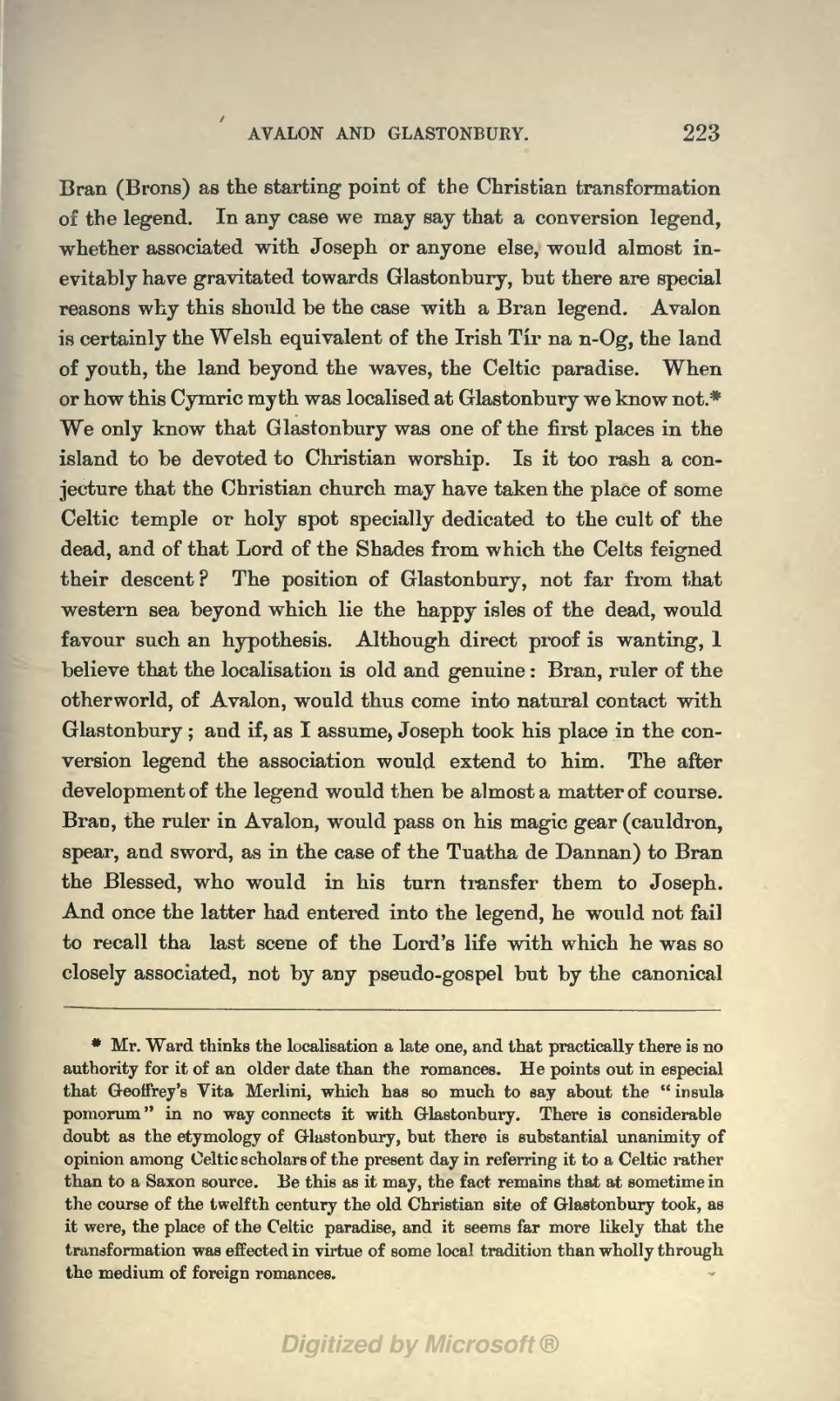Bran (Brons) as the starting point of the Christian transformation of the legend. In any case we may say that a conversion legend, whether associated with Joseph or anyone else, would almost inevitably have gravitated towards Glastonbury, but there are special reasons why this should be the case with a Bran legend. Avalon is certainly the Welsh equivalent of the Irish Tír na n-Og, the land of youth, the land beyond the waves, the Celtic paradise. When or how this Cymric myth was localised at Glastonbury we know not.[1] We only know that Glastonbury was one of the first places in the island to be devoted to Christian worship. Is it too rash a conjecture that the Christian church may have taken the place of some Celtic temple or holy spot specially dedicated to the cult of the dead, and of that Lord of the Shades from which the Celts feigned their descent? The position of Glastonbury, not far from that western sea beyond which lie the happy isles of the dead, would favour such an hypothesis. Although direct proof is wanting, I believe that the localisation is old and genuine: Bran, ruler of the otherworld, of Avalon, would thus come into natural contact with Glastonbury; and if, as I assume, Joseph took his place in the conversion legend the association would extend to him. The after development of the legend would then be almost a matter of course. Bran, the ruler in Avalon, would pass on his magic gear (cauldron, spear, and sword, as in the case of the Tuatha de Dannan) to Bran the Blessed, who would in his turn transfer them to Joseph. And once the latter had entered into the legend, he would not fail to recall that last scene of the Lord's life with which he was so closely associated, not by any pseudo-gospel but by the canonical
- ↑ Mr. Ward thinks the localisation a late one, and that practically there is no authority for it of an older date than the romances. He points out in especial that Geoffrey's Vita Merlini, which has so much to say about the "insula pomorum" in no way connects it with Glastonbury. There is considerable doubt as the etymology of Glastonbury, but there is substantial unanimity of opinion among Celtic scholars of the present day in referring it to a Celtic rather than to a Saxon source. Be this as it may, the fact remains that at sometime in the course of the twelfth century the old Christian site of Glastonbury took, as it were, the place of the Celtic paradise, and it seems far more likely that the transformation was effected in virtue of some local tradition than wholly through the medium of foreign romances.
